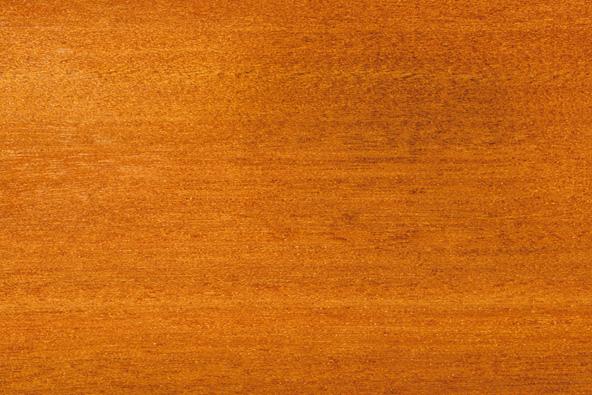Satinay is a hardwood of limited commercial availability that has been used for flooring, paneling, decorative veneers and furniture.
Fraser Island Turpentine
Syncarpia hillii
Satinay is a hardwood that also sometimes called Fraser Island Turpentine. As its name suggests, it is found mostly on Fraser Island, though it grows in small areas in Coolala on the mainland. As the area in which it grows has World Heritage listing, it is of limited commercial availability, but it has been used for flooring, paneling, decorative veneer, chisel handles, mallet heads and heavy furniture.
The heartwood of satinay is reddish brown, while the sapwood is usually distinctively paler, and fuming with ammonia produces a greyish plum colour. The texture is relatively fine and even, and the grain rather interlocked, giving some ribbon figure to the radial surface, which also has a subdued ray fleck. The wood resembles turpentine but is easier to work, and the logs generally have very few defects.
The sapwood is not susceptible to lyctid borer attack and it is termite resistant. It also accepts preservatives easily. It is good for firm carving, though it is hard to glue and care is needed when dressing because of the interlocking grain. It takes polish, paints and stains well.
Shrinkage
| Very Low | Low | Medium | High | Very High | |
|---|---|---|---|---|---|
|
|
|
|
|||
|
Tangential :
|
10.00% | ||||
|
Radial :
|
4.40% | ||||
|
Unit Movement Tangential:
|
0.35% | ||||
|
Unit Movement Radial:
|
0.17% |
Strength Group
| Very High | High | Reasonably High | Medium High | Medium | Reasonably Low | Low | Very Low | |
|---|---|---|---|---|---|---|---|---|
| Unseasoned: | S1 | S2 | S3 | S4 | S5 | S6 | S7 | S8 |
|
|
||||||||
| Seasoned: | SD1 | SD2 | SD3 | SD4 | SD5 | SD6 | SD7 | SD8 |
|
|
Stress Grade
|
Structural No. 1 |
Structural No. 2 |
Structural No. 3 |
Structural No. 4 |
Structural No. 5 |
|
|---|---|---|---|---|---|
| Unseasoned: | F17 | F14 | F11 | F8 | F7 |
| Seasoned: | F27 | F22 | F17 | F14 | F11 |
Density per Standard
| Seasoned: | 840kg/m3 |
|---|---|
| Unseasoned: | 1155kg/m3 |
Joint Group
| Very High | High | Reasonably High | Medium | Low | Very Low | |
|---|---|---|---|---|---|---|
| Unseasoned: | J1 | J2 | J3 | J4 | J5 | J6 |
|
|
||||||
| Seasoned: | JD1 | JD2 | JD3 | JD4 | JD5 | JD6 |
|
|
Colour
| White, yellow, pale straw to light brown | Pink to pink brown | Light to dark red | Brown, chocolate, mottled or streaky | |
|---|---|---|---|---|
|
|
||||
Mechanical Properties
|
Modulus of Rupture - Unseasoned:
|
77 |
|---|---|
|
Modulus of Rupture - Seasoned:
|
129 |
|
Modulus of Elasticity - Unseasoned:
|
11 |
|
Modulus of Elasticity - Seasoned:
|
16 |
|
Maximum Crushing Strength - Unseasoned:
|
38 |
|
Maximum Crushing Strength - Seasoned:
|
70 |
|
Impact - Unseasoned:
|
9.9 |
|
Impact - Seasoned:
|
7.1 |
|
Toughness - Unseasoned:
|
Medium - 15 - 24 Nm |
|
Toughness - Seasoned:
|
Low - up to 15 Nm |
|
Hardness - Unseasoned:
|
5.2 |
|
Hardness - Seasoned:
|
8.3 |
Durability
| Low | Moderate | Reasonably High | High | |
|---|---|---|---|---|
| (0 - 5 yrs) | (5 - 15 yrs) | (15 - 25 yrs) | (more than 25 yrs) | |
|
In-Ground:
|
|
|||
| (0 - 7 yrs) | (7 - 15 yrs) | (15 - 40 yrs) | (More than 40 yrs) | |
|
Above ground:
|
|
|||
| (0 - 20 yrs, usually < 5) | (21 - 40 yrs) | (41 - 64 yrs) | (More than 60 yrs) | |
|
Marine Borer Resistance:
|
|
|
Lyctid Borer Susceptibility:
|
Not Susceptible |
|---|---|
| Lyctid Borer Susceptibility - Other: | |
|
Termite Resistance:
|
Resistant |
Fire Properties
| 1 - non-combustible | 2 - reasonably non-combustible | 3 - slightly combustible | 4 - combustible | |
|
Fire Properties Group Number: |
|
| Group Number - Other: | 3 if used on MDF or particleboard ≥12mm; veneer thickness 0.6-0.85mm |
|---|---|
|
Average Specific Extinction Area:
|
<250 |
|
Bushfire Resistance:
|
BAL 12.5 and 19 – All AS3959 required applications |
The sapwood of satinay is distinctively paler than the heartwood, which is reddish brown. The grain is interlocked, which gives some ribbon figure to the radial surface, which also has a subdued ray fleck. The logs generally have few defects. Fuming with ammonia produces a greyish plum colour.
Satinay has been used for flooring, paneling, decorative veneer, chisel handles, mallet heads, and heavy furniture.
